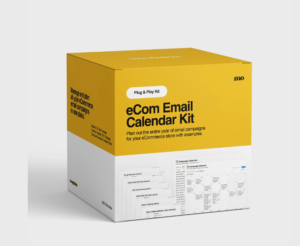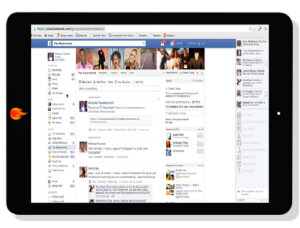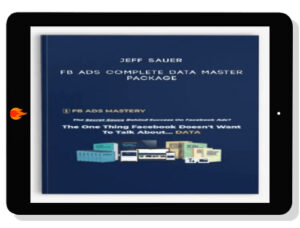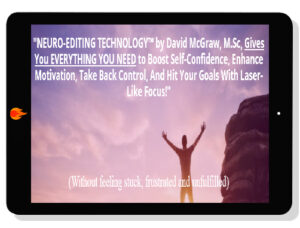Energy Interventions for Working with Pain
This information is abstracted primarily from Donna Eden’s Energy Medicine Chapters 10-12 (see REFERENCES) and from Innersource Dialogues (www.innersource.net). Figure and Page numbers refer to Energy Medicine. Other sources are noted.
When sedating pain, it is important to consider its cause. If the cause is not obvious, it would be wise to have it evaluated by a qualified medical professional. Pain can be a signal of significant hidden disease. Ignoring an underlying condition by sedating the pain may allow the condition to worsen and cause serious, potentially life-threatening problems. The material presented here focuses on specific techniques. Before using these, it is a good idea to use a generalized energy practice such as Donna’s Daily Routine and to work with appropriate neurolymphatic and neurovascular reflexes.
The following table introduces the primary techniques for working with pain and their use. Definitions are as follows:
Self: may be done by oneself
Partner: done by a partner or helper
Local: used for localized pain
Diffuse: used for diffuse pain
Open wound: may be used with an open wound
Closed wound: may be used with a closed wound
Chronic on meridian: for chronic pain located along the path of a meridian (see page 101 and following)
Associated with emotion: for pain particularly associated with emotions
X: generally better choice in column
x: generally less-preferred choice in column
Breathing out the pain. Breath moves energy; by focusing your breath, you can gain some control over your pain. Breathe in through your nostrils, mouth closed, as if smelling a rose. Breath out through your mouth, as if blowing out a candle. Make each breath slightly slower than the breath prior to it. “Smell the rose, blow out the candle.”
Tapping. For sore muscles, such as shoulder pain, tap the area. Use either your fingers or something with many little tappers, such as a hairbrush with plastic prongs. Tap for as long as it feels right, perhaps about a minute or so until you notice that something has jarred loose and the energy can move more freely.
Stretching. As long as it is not an open wound, stretching the area surrounding the pain can also bring relief. Stretching the areas about an inch or two beyond the sides of the pain relieves some of the congested energy. Then press in deeply around the perimeter of the pain and stretch the muscle in every direction.
Pinching. There is a way of lightly pinching the skin that signals to the brain that the pain is no longer necessary, like hitting the reset button after a breaker has been thrown (cannot be done over an open wound). Come to the center of the painful area with your thumb and forefinger and very, very lightly pinch the skin one time. Pinching has a resetting effect, triggering the “spindle cell” mechanism. Also, see How to relieve pain in your hands, wrists, or elbows at end.
Siphoning. Place your left hand on the area of the pain of someone you want to help. Be aware that your left hand, which pulls energy, is siphoning off the other’s pain. Then hold your right hand down, out, and away from your body. Be aware that the pain is draining off your right hand. “Pumping” the right hand gently up and down may speed the process. You may feel a movement or sensation of pulling. Hold this position till you feel that sensation stop. Afterwards, you may place your right hand on the area of pain and raise the left hand upward to bring in healing energy (per Hover-Kramer, see REFERENCES). If you feel the energy is getting caught in your own body instead of siphoning out, stop immediately and vigorously shake both hands. If you ever feel someone’s energy is caught in you, place your arms to above the elbows in cold running water.
Feathering. Moving your fingers rapidly and lightly over an area is called feathering. This may help release a muscle cramp (see Green in REFERENCES).
Spindle Cell. Another technique that can be used to relax a tight or cramping muscle is the spindle cell. This is similar to pinching above, but is used on a large muscle. Place two thumbs together in the belly of the muscle and push toward each other in the direction that the fibers run, using medium pressure (see Green in REFERENCES).
Golgi Tendon. The Golgi tendon apparatus is located near the ends of the muscle. If you have a muscle cramp, you may be able to release it by pulling towards the origin and insertion of the muscle, with the fingers near the origin and insertion. This is contrasted to the spindle cell technique, where the fingers are near the center of the muscle and are pushing toward each other. (see Gralton in REFERENCES.)
Sedating the pain. The technique most used by Donna for pain relief is to hold the acupuncture sedating points associated with the pain. Sedating a meridian has the effect of releasing excess energy while calming it. The Muscle Meridian Chart (Figure 43, page 286) shows all 14 meridians and the muscles related to each. To hold the sedating points (about 4 minutes), identify a muscle that is in the area of the pain using the Figure. Pinch it first to see if the pain will improve (see Pinching above). Find the name of the corresponding meridian. Look at Figure 26 (page 120) to find the corresponding paired sedating points. Lightly but firmly hold the first pair for 2-3 minutes. Hold the second pair for 1 1/2 – 2 minutes. Sometimes it is necessary to follow this with holding the strengthening points in a similar fashion. This combination of sedating and strengthening brings a rush of fresh energy through the meridian that is affected, and it does a more thorough job of dispersing the pain signals.
Taking the teeth out of a toothache. The same strategy for sedating the meridian that governs the muscle going through a painful area can be used for working with toothaches. Look at the dental chart, Figure 44 (page 287). Sedating the meridian corresponding to the tooth will relieve pain and initiate a healing process.
A Hopi Healing Technique for Diffuse Pain. For people whose pain is dispersed throughout large areas of the body, particularly if it results from an autoimmune disease such as fibromyalgia or lupus, a Hopi practice provides relief. It is also helpful for other kinds of diffuse pain, such as when all your muscles ache or your back is sore. The technique tells your brain to turn off the pain. It takes 2-3 minutes. Have the person lie face down and do a spinal flush. Curl your fingers and place the fingers of one hand on the side of the spine that is closer to you. Start at the bottom of the spine if you want to move the energy up; at the top of the spine if the person tends towards headaches and you want to move the energy down. Place your other hand, fingers curled, on top of the first hand, reaching across the spine so that it is between the two sets of curled fingers (see the figure on the left, below). With your fingers exerting a bit of pressure, move your hands along the length of the spine. As you do, mentally “laser beam” energy through your fingers and into the person’s back. (An alternative is to put both thumbs on the side of the spine closest to you and all your fingers on the opposite site of the spine, traveling its length in either direction; then move to the other side of the person and repeat the process.) A variation from traveling straight up or down the spine is to make spirals along the spine. Let one set of curled fingers spiral the skin in a clockwise direction on the far side of the spine and the fingers of the other hand spiral the skin in the opposite direction on the near side of the spine. Before finishing, pinch and lift the skin over the spine itself, beginning at the waist and traveling up the spine. Stop at the point where your fingers cannot get enough skin to pinch and lift.
A variation of the same procedure as recommended by Hover-Kramer (see REFERENCES) to treat a localized energy block or back problem is to place three fingers of each hand on either side of the affected area of the spine as in the illustration on the left below, resting one hand on the other while applying firm pressure. Hold the position till you feel the energy pulsing and wait till it is smooth and balanced. Then place both thumbs on the side of the spine closed to you and the fingers of both hands on the opposite side (see the figure on the right, below). Ask the client to breathe deeply and experience any inner sensations and emotions. They may feel pain, discomfort, heat, or movement. Wait till the energy intensifies and pulses. Breathe rhythmically with them to establish a slower pace. When the energy connection is complete and the spine feels balanced, pull the hands rapidly straight up. Reseal the
energy field by placing both hands over the area you were working on. This treatment can be applied to other blocked areas.
Zone Tapping. Zone tapping is based on foot reflexology, which maps the body into the zones that are shown in Figure 45 (page 290). You locate points to tap based on the zone within which your pain sits. Zone tapping is most useful for localized rather than diffuse pain and helps 70-80% of people who try it. The zones are on both the front and back of your body. Your softer parts, which are in the front and inside the limbs, are considered to be yin. On your arms and legs, yin is where the hair doesn’t grow as easily. By this map, the front or yin side of your body includes the bottom of your feet, the palms of your hands, the inside of your arms and legs, the front of your neck, and your face. The more rough-skinned areas of your body, mostly on the back, are considered yang. The yang side of your body also includes the top of your feet, the backs of your hands, the outside of your arms and legs, and the back of your head and neck. For zone tapping (about 2 minutes), locate where your pain is in one of the zones. Find the number that is in the same zone as your pain. If the pain is below your waist, you will be tapping at your ankle (“A” on the diagram). If the pain is above your waist, you will be tapping at your wrist (“W”). If the pain is on the front of your body (yin), tap on the inside of your ankle or wrist. If the pain is on the back of your body (yang), tap on the outside of your ankle or wrist. Find the point on the diagrams of the wrists or ankles that corresponds with your pain. “A3” means your pain was in zone 3 below the waist. Tap the point about 10 times. Stop for about 10 seconds. Then tap for about 90 seconds more. The uninterrupted tapping calms the slow, persistent pain impulses, while interrupting the rhythm engages and calms the faster, shooting impulses. The pain will continue to diminish for about 10 minutes after you have stopped tapping. If most of the pain has disappeared, but not all of it, tap in the same zone on the opposite side of the body.
You can energy check to be certain you are on the right point (though no harm is caused if you tap the wrong point). For example, if you are unsure whether your pain is in zone 1, 2, or 3 of the inside ankle, energy check while touching each point. You will lose energy on the zone that needs to be tapped and will stay strong on the other zones.
Pain Chasing. If you have chronic pain and the pain falls along a meridian line, pain chasing helps. Think of it as squeezing the pain out of the meridian, like squeezing toothpaste out of a tube. You can do it for yourself, but it is nicer to have a partner do it for you (5-30 minutes). Identify the meridian the pain is on. Place a finger from one hand at the center of the pain and a finger from the other hand on the pain at the beginning of the meridian. Press fairly hard with both. Pain always has a twin (at least one matching point of pain on the meridian), though you may not be aware of it till it is stimulated. Keeping your finger on the pain, inch along the meridian a finger’s width at a time with the other hand till you reach a place that hurts. Once found, simultaneously hold that point and the pain point firmly (*). The pain on one of the points usually will
have vanished in less than 3 minutes. This occurs because you are opening a channel for blocked energy to flow. Move the finger from the point that no longer hurts. If it is the second point, continue to move your finger toward the original point, a finger’s width at a time. If it is the original point that stops hurting, move it a finger’s width away from the other finger, toward the end of the meridian. Again, press in fairly hard. Continue till you find a second point that is painful. Then hold points simultaneously, as above (*). Eventually, one finger will get to the end of the meridian, or the fingers will be side by side. If the fingers are side by side, move the finger from the point that doesn’t hurt a finger’s width toward the opposite end of the meridian from which you started. Finally, one finger will get to the end of the meridian. When it does, just “chase it” with the other finger, a finger’s width at a time. Continue till you have chased the pain off one end of the meridian. If the pain gets “stuck” hold the acupuncture sedating points at the end of the meridian.
Emotion and physical pain. Determine which of the five rhythms is out of balance, using the general indicator test as you pull in each of five directions across your midsection (see Star Diagram). Look at Figure 35 (page 210) to find the rhythm’s stress emotion and the meridians that this rhythm governs. Determine which of these meridians is in trouble. If you identify with the stress emotion, ask yourself if it is more inwardly directed (the yin meridian) or more outwardly directed (the yang meridian). You can also energy check the meridians that are on the rhythm using the alarm points. Once you have identified the meridian, hold its acupressure sedating points if the pain involves congestion, sorrow, pent-up emotions, or difficulties letting go or relaxing, or hold the strengthening points if empowerment or strength needs to be evoked. If the meridian involved is heart or spleen, use only the strengthening points. In general, holding the neurovascular points is always helpful when emotions are involved (page 216).
Magnets. The therapeutic use of magnets is not so simple as just taping a magnet to the body of placing a magnetic patch over a problematic area. The strength of the magnet, the pole that is placed against the skin, and the area on which the magnet is placed all make a difference. If used incorrectly, magnets can be harmful. One of the tricky aspects of working with magnets is that the formula that will help you one day may not help after the magnets have shifted your energy field. If you are conscious of this dilemma, you can counter it. For instance, if a magnet that has been helping you feel better begins to make you feel worse, you can flip it over. This will balance the overcorrection, usually within a minute. Then remove the magnet.
How to test the polarity of a magnet. The easiest way to find out which is the north or south side of a magnet is to use a compass. The side of the needle that points to the Earth’s magnetic north will also point to the north pole of your magnet. Mark the north side with oil-based paint or fingernail polish. Without a compass, you can energy check a magnet’s effect on your body to determine which is the north and south side.
Place the magnet against your head above the left ear and have someone energy check you. You will lose your energy when the north side of the magnet is against your side; the south side will strengthen you.
Magnets and pain. Magnets can be used as a supplement to the techniques mentioned above. They should not be placed over a pacemaker or over the womb during pregnancy! Nor should the south side of a magnet, which stimulates growth and increases circulation, be placed over an infection, a swelling, or a tumor, or on a person with diabetes! The north side of a magnet draws energy toward it; the south side disperses energy away from it. Begin with a small magnet that has a weak force field (such as the lifesaver-like magnets sold by Radio Shack). Once you are familiar with the effects of a weaker magnet, you may wish to experiment with magnets that are somewhat more powerful. Generally for pain work the north side of the magnet is placed against the skin (though there are exceptions, and you should trust your experience). The south side may be held to an area for about 30 seconds to restore balance after the north side has been taped to the skin for a period of time. The magnet is placed on the skin directly over an area of pain, unless there is an open wound or other reason not to. In that case, place it immediately below the area of the pain (i.e. away from the head and closer to the fingers or toes). Do not place the south side of the magnet directly on a painful area. You can, however, place the south side above the pain (closer to the head). This can help with blood flow, digestion, and overall energy. The exception to this is in the case of a burn. First place the north side below the burn for pain relief and fighting infection. Once there is a scab, laying the south side on the burn can help skin heal faster, but if it begins to increase the pain, turn the magnet over for a few seconds. Then remove it, or try again.
You can also use the interplay between the north and south sides. For instance, suppose you want to hold the south side over your stomach because you have indigestion, but you also feel some pain in the area. You could hold the north side over your stomach until the pain goes away and then turn it over so the south side can work with the indigestion. For a headache, you could put the north side on the top of your head to sedate the energetic congestion, and once you feel some relief, use the south side for about 30 seconds to disburse the energy. Use Band-Aid-type tape to attach the magnet to your skin.
It is not possible to provide exact guidelines for how long to keep the magnet taped to your body, so stay attuned to your intuition. You may remove the magnet as soon as the pain resolves, perhaps in as little as a minute. You may wear it all night. You may wear it for a few minutes several times each day to change the field of a chronic pain condition. When the pain stops, remove the magnet; if the pain returns, replace the magnet. As a rule of thumb, never keep the north side of the magnet taped on for more than 12 hours or the south side for more than 30 minutes.
Supply information:
(1) Radio Shack 1 1/8” Doughnut Ceramic Magnets #64-1888 (package of 5) $2.49 from www.radioshack.com.
(2) Magna Bloc Replacement Adhesive Pads #E-8928 (60 double-sided, hypoallergenic pads) $5.60 from www.quixtar.com. These make application of the magnets above simpler, but plain tape will do too.
“Chakra” techniques. Pain can also be relieved by using chakra-clearing techniques. Because small “chakras,” vortexes of swirling energy, form over areas of pain and wounds, keeping this energy moving can be quite helpful. Simply rotate the left hand in a slow, counterclockwise, circular motion over the part of the body that hurts. This draws out stagnant energy and relieves pain. Do this for a few minutes, but not more than five minutes. Then move either hand (whichever feels better) in a clockwise motion to balance the energy you have just cleared.
Combing. Combing consists of drawing the energy field projected off of your fingers through an area of pain and off the body. It works best for localized pain but may be used for diffuse pain. One can picture rays of energy coming off your fingers and, starting above the location of pain (i.e. closer to the head), drag these energy rays through the pain and off the nearest limb. For example, pain in the shoulders or arms would be combed through the limb and off the hands. Pain in the abdomen or legs would be combed through the legs and off the feet. If you cannot feel the energy field, keep your hands within about 2 inches of the body and spread your fingers slightly, as though you were playing the piano. This motion is repeated until the energy field feels clearer, typically a few minutes if the procedure is going to work. At the end of the combing motion, one can “flick” the energy away from the body. If your hands start to feel uncomfortable and you cannot relieve the feeling by “flicking,” immerse them to the elbows in cold water. You can extend the projection of your energy field by starting the combing motion from your hips and moving it through your shoulders and then your arms, rather than just swinging your arms. (Taught by Lisa O’Shea at the Qi Gong Institute of Rochester)
Qi Ball. The Qi Ball is most useful for working with localized, chronic pain which you can’t get to move in any other way. It involves forming a ball of energy between your hands, then moving this energy ball into the location of pain or “stuck” energy. The ball is held there with both hands, and the hands are rocked, circled, or otherwise moved slowly and gently with the intention of using the ball to “scrub” deeply and break up the energy. The size of the ball can be made larger or smaller to accommodate the size of the area of pain. This typically can be performed in a few minutes, depending on the chronicity of pain. It is helpful to finish by combing through the area afterward (see above). (Taught by Lisa O’Shea at the Qi Gong Institute of Rochester)
Brazilian Toe Massage. This technique is deeply relaxing and may be helpful for a variety of different types of pain, particularly when associated with stress. It requires a partner and about 15 minutes. The client lies on their back while the partner
sits or stands at their feet, with easy access to the toes. The toes are held in pairs very lightly, both feet at the same time in the sequence which follows, for 3 minutes. When moving between toes, move the thumb then the fingers to the next toe very smoothly and gently. The thumb is on the bottom of the toe and the finger is on the top of the toenail. The sequence is as follows:
Middle toe (3rd toe) is held between the partner’s thumb and 3rd finger
4th toe is held between the thumb and 4th finger
5th toe is held between the thumb and 5th finger
2nd toe is held between the thumb and 2nd finger
1st toe is held with the thumb beneath the toe and the 2nd and 3rd fingers holding each side of the base of the nail.
(See Green in REFERENCES)
How to relieve pain in your hands, wrists, or elbows. The spindle cell mechanism reestablishes neurological equilibrium in a disturbed area. Carpal tunnel syndrome, stiff joints, sore arms, and other related problems often respond to tiny pinches because the spindle cell as the belly of each muscle will reset. Make tiny light pinches up and down the inside of your arm for about 20 seconds. The lighter the pinch, the better. This will improve the condition. In fact it is good to energy check because otherwise you won’t believe it. Suppose you have been typing at the computer for an hour. To reset the spindle cells (about a minute), begin with a general indicator test. If you test strong, open and close your hands several times and retest. Repetitive movement such as typing or opening and closing your hands can stop energy from flowing off your fingers. If you tested weak, reset the spindle cell mechanism by pinching up and down your arm. Retest. If you now test strong, the pinching has freed energies and is helping.
Specific Neuromuscular Reset Technique (see Green in REFERENCES). This technique provides a more precise way of releasing localized muscle tension but requires a partner who knows how to energy check with muscles. Energy checking allows you to identify specific areas of energy imbalance around a sore muscle or joint and allows you to determine the direction of massage that will most effectively help. The result will be greater and longer lasting success. This technique allows you to check an injured muscle without testing it directly. First, check for a clear circuit indicator muscle (IM), then check for dehydation. Rub the K27 points. Place a hand over the tense or painful area and recheck the IM; it will unlock if the tested area is out of balance. Touch 2 fingers along the length of the affected muscle and recheck the IM; if it stays locked, then move your fingers to another area closeby and recheck. When the IM unlocks, stroke the affected muscle with 2 fingers in one direction along the muscle’s length and recheck the IM; then stroke in the opposite direction and recheck the IM. Massage the muscle 3-4 times with light to medium pressure in whichever direction made the IM lock. Now touch the area just massaged and retest the IM; it should stay locked. To set and make sure that the correction is complete, tap the area with 2 fingers and retest the IM. If it stays locked, move on to the next area. Check the entire areea feeling pain or tightness as well as the surrounding muscles. If it unlocks, then use the Spindle Cell technique above, with energy checking. Push inward on the muscle belly and check the IM; then pull outward on the muscle belly and check the IM. Correct in the direction that locks the muscle.
SALES PAGE







